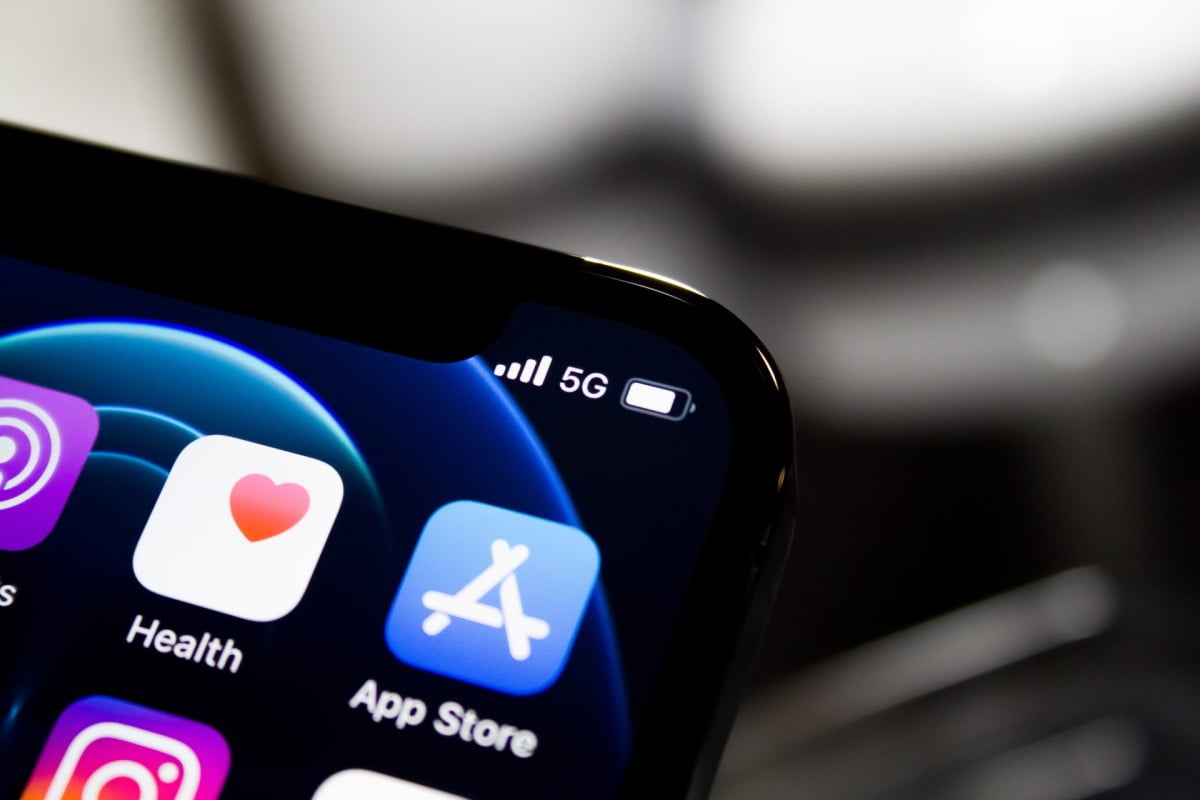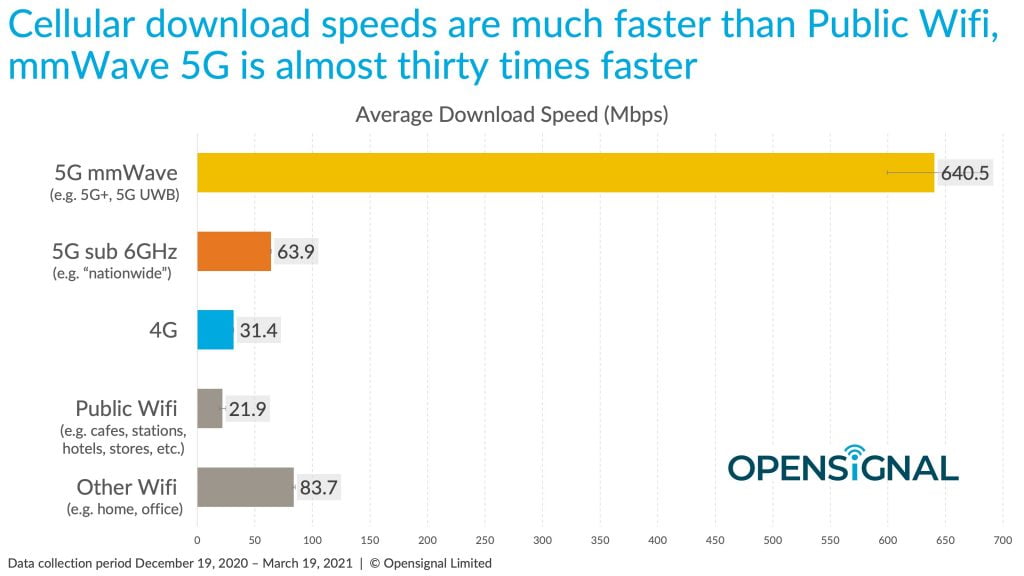
Yes, it is not surprising that mmWave 5G is better than public Wi-Fi because we know that even 4G can beat public Wi-Fi. But here is where things get interesting when it comes to mmWave 5G and public Wi-Fi spots.
Both require the same kind of availability to provide a good connection to the users. For operators to provide seamless mmWave 5G services, they will have to cover a whole area of the city with mmWave antennas. This is because mmWave 5G users very high frequencies and provide a small coverage just like Wi-Fi.
According to a report from Opensignal, most of the users across the US aren’t experiencing true 5G with mmWave. Instead, they are getting 5G services on frequency bands under 6 GHz.
With 5G on bands under 6 GHz, Opensignal users saw download speeds of 63.9 Mbps which is 3x faster than public Wi-Fi. However, with mmWave 5G, the download speed was 30x faster compared to the public Wi-Fi.

Opensignal’s analysis team head, Ian Fogg, has cited three reasons for the speed difference between mmWave 5G and public Wi-Fi despite being very similar in availability.
Why mmWave 5G is Faster than Public Wi-Fi
Fogg’s first reason behind this observation is ‘interference from other signals’. Public Wi-Fi uses unlicensed spectrum that can be accessed by anyone. In such areas, multiple Wi-Fi networks are competing in the same frequencies creating interference issues.
Since residential areas have very few buildings, the competition between Wi-Fi networks is much lesser, hence the higher internet speed. On the other hand, 5G and 4G networks use dedicated frequencies that are licensed to the operator delivering a better experience to the users.
The second reason cited by Fogg is ‘older technology foundations’. Public Wi-Fi networks are powered by wired broadband. If that broadband technology was installed several years ago and has not been updated yet, it won’t be able to handle a high capacity of users.
In comparison, the operators keep upgrading the backhaul connection to every cellular base, which in turn ensures that wired connectivity never interferes with their users' internet experience.
Lastly, the third reason cited by Fogg is ‘not enough Wi-Fi access points of high quality’. High-quality Wi-Fi access points ensure that a good signal is delivered everywhere. If not, the overall experience for the user would degrade.
The acceptable or good quality Wi-Fi standards today are Wi-Fi 5 and Wi-Fi 6. Modern routers usually come with the latest Wi-Fi standard installed on them.















